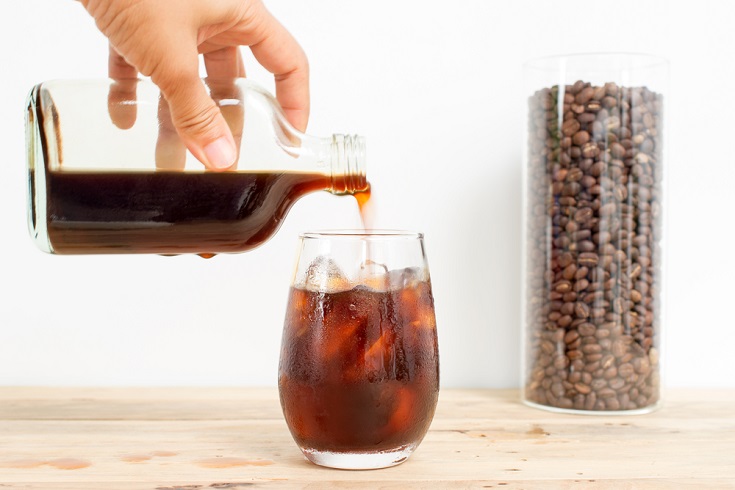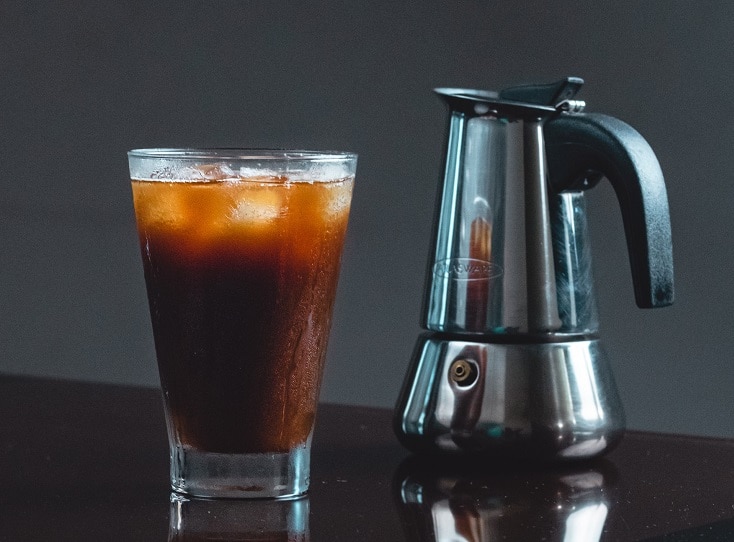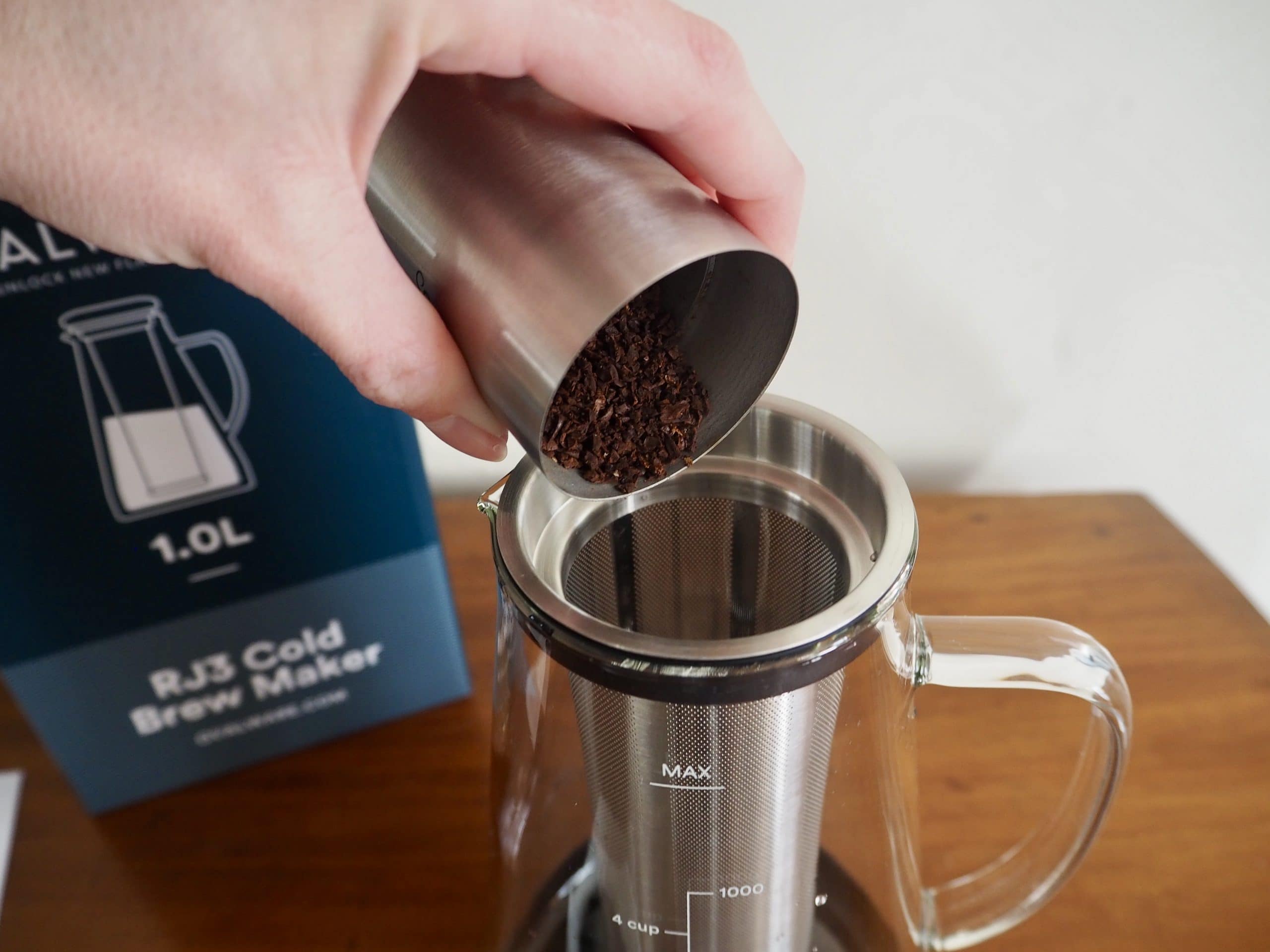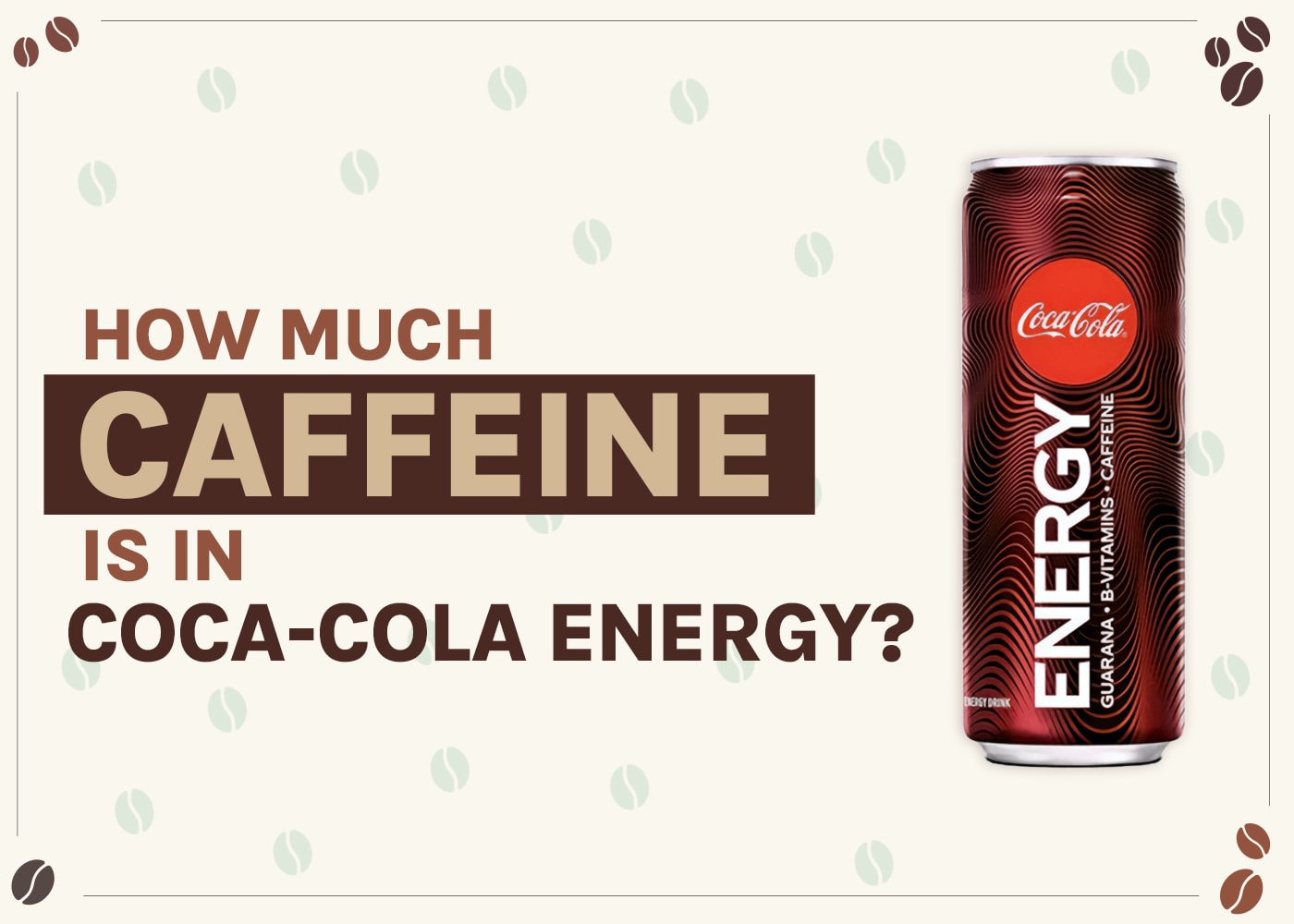
Cold brew coffee has skyrocketed in popularity over the last few years, thanks to its natural sweetness and velvety smoothness. Both local specialty coffee shops and large chains have made cold brew a focus, and many people have discovered that they prefer cold brew to regular coffee. If you’re one of the few coffee drinkers left on the planet who has never had cold brew, you owe it to yourself to stop what you’re doing and go try one.
But what makes cold brew coffee so different from regular “hot brew” coffee? In this article, we’ll explain what cold brew coffee is, why it tastes different than regular coffee, and how to make it. If you’re curious about cold brew, this is the article for you.

Cold Brew Basics
Cold brew gets its name from the water temperature used to make it, which is much lower than the water temperature used in traditional coffee brewing. A regular cup of coffee brews between 200 ºF and 212 ºF with the sweet spot for optimal extraction around 205 ºF. Most baristas don’t mess with water temperature since it’s difficult to do precisely, and tweaking other brewing parameters have the same effect as changing the temperature.

On the contrary, cold brew coffee is most often brewed at room temperature, typically between 65 ºF and 72 ºF. When we first heard about cold brew, we assumed that the brewing temperature would be, you know, cold. Water around 70 ºF hardly counts as cold in our book, but it is significantly colder compared to traditional brewing methods.
Because of the low temperature, you might be wondering why cold brew doesn’t taste weak and watery. After all, low temperatures extract less flavor from coffee grounds, so surely 70 ºF water will extract hardly any flavor, right? Yes, but there’s a trick. Cooler water extracts flavor more slowly than hot water, so we have to compensate for the lower temperature by letting the coffee extract much longer than we would in a traditional brewing method. How much longer? Most cold brew recipes let the coffee steep for between 12 and 24 hours!
Flavor and Extraction
Cold brew coffee is sweeter, smoother, and has much lower acidity than regular coffee, making it a great choice for people that find regular coffee too harsh for their stomach. Two primary factors give cold brew its distinct characteristics: a low brew temperature and a large grind size.

Water Temperature
We already talked a little bit about the water temperature, but to understand why the temperature has such a large effect on the coffee, we need to think about how coffee extracts.
Anyone who has struggled to clean residue off of a pot or pan knows that hot water is much better than cold water at breaking things down. Coffee is not an exception to this rule, and hot water is far more effective at breaking coffee grounds down and dissolving their flavor into your mug. As you make the brew water cooler, less flavor gets extracted in a given amount of time, but which flavors get extracted changes too.
Broadly speaking, hot water extracts floral and fruity flavors, while cooler water preferentially extracts chocolate and nutty flavors. This is an oversimplification but does explain why changing the water temperature drastically alters your coffee’s flavor.
Another effect of brewing at lower temperatures is reduced acidity in the cup. One of the biggest benefits of cold brew is it’s much easier on the stomach than hot brewed coffee, thanks to its lower acidity. Having low acidity also makes cold brew taste smoother and contributes to the velvety texture many people love.

Grind Size
Changing the grind size has a similar effect to changing the water temperature. Cold brew uses a very large grind size – even larger than used in a French press. Having a large grind size also slows down extraction and pushes the flavor profile further towards the sweet, chocolatey end of the spectrum. Large coffee grounds make it, so only some of the bean is exposed as opposed to fine grounds, where virtually the entire bean comes into contact with water.

Our Favorite Cold Brew Recipe
One of the best things about cold brew is how easy it is to make. It takes a while to extract but requires only about 5 minutes of hands-on time to prepare. Straining and filtering the coffee can be a pain, but it’s not too bad if you have some common kitchen equipment.

- 50 g coffee
- 350 g of room-temperature water
- A coffee grinder
- A French press (or other means of filtering)
- A kitchen scale
- Start by grinding 50 g of coffee on a very coarse setting. If you’re familiar with a French press grind size, grind one or two steps coarser than that for cold brew.
- We like to use a French press to filter our cold brew since it’s quick and easy. You can use an ordinary kitchen strainer or cheesecloth if you prefer.
- Add the ground coffee to your French press and pour 350 g of room-temperature water over the grounds. Stir the mixture and cover the French press.
- Let the cold brew steep for 16 hours.
- After 16 hours have elapsed, plunge the French press and decant the coffee into another container.
- Optionally, you can pour the strained coffee through a paper filter for a cleaner cup.
- You can store the cold brew in a sealed container in the refrigerator for up to 2 weeks.

Conclusion
We love cold brew and hope that this guide has helped you understand what it’s all about. The increased popularity of cold brew in recent years is well-deserved and not a fad. Cold brew is sweet, smooth, and easy to prepare, making it one of the best ways to brew coffee at home. If you decide to give cold brew a shot, the recipe presented here is our favorite and is a great introduction to the method. Like all recipes, it is merely a guide, so feel free to tweak it and make it your own!
Related Reads:
- Can You Heat Up Cold Brew Coffee?
- 8 Creative Uses for Cold Brew Concentrate
- How to Make Cold Brew Coffee (With Pictures)
Featured Image Credit: DG FotoStock, Shutterstock















